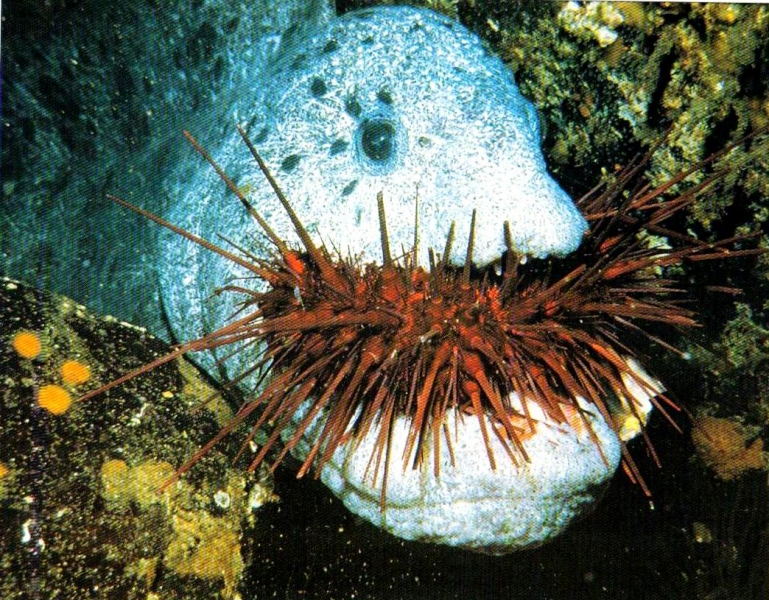

Morays are carnivorous and feed primarily on other fish, cephalopods, mollusks, and crustaceans. Most Moray Eels use ambush hunting to get their prey, their strong, unique teeth, and jaw structure allows them to grab food and immediately start to tear it up and start eating it.

Some species of fish will follow them to avoid predators themselves. They usually hunt at night and rely on smell to help them catch their prey. They begin life as small, transparent larvae drifting through the seas, then develop into bright orange juveniles. They live in the cold waters of the North Pacific, from California to the Sea of Japan, down to around 200 metres underwater. Morays do not see very well but have an excellent sense of smell. Wolf eels are not actually eels, but are members of a fish family known as wolf fish or sea wolves. Moray Eels can be aggressive but most of the time they will flea instead of fighting. Their few predators include Groupers, other morays, and barracudas. Morays are ambush predators and typically hide in crevices in the reefs and wait until their prey is close enough for capture. Their location depends on the species of the eel, usually Morays frequent, warm and tropical waters, and subtropical coral reefs to depths of 150 meters, where they spend most of their time concealed inside crevices and alcoves. Moray Eels live in both freshwater and saltwater, but most commonly saltwater. They are very fast swimmers and are able to use very little energy to swim, unlike fish they move more like snakes in the water with side to side movement. They can have various markings on them as well, such as stripes or spots. Moray Eel’s color varied from black, brown, gray, and olive green.

Most of them have darker coloring to blend in well while living in murky waters. Moray’s can range in color depending on the species and location. They are the only known animal in the world that has this design. They have two sets of jaws and teeth, one set that you can see and one set that is in their throat, the set that is in their throat allows them to break up food and digest it. They can range in length from 6 inches to up to 13 feet and can weigh up to 80 pounds while their average weight is 30 pounds. While Moray Eels look like snakes they are not, but they are closely related to various types of fish. They vary in size and color, depending on their location and species. There are currently around 202 known species, divided between 16 genera. The Moray Eel, a top predator of the reef are known for their toothy smiles.


 0 kommentar(er)
0 kommentar(er)
